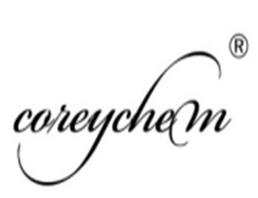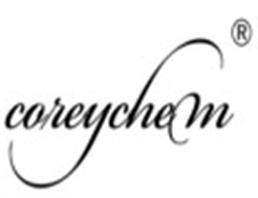
polyvinylsulfuric acid potassium salt
| Price | $1 |
| Package | 1kg |
| Min. Order: | 1kg |
| Supply Ability: | 1000kg |
| Update Time: | 2019-07-06 |
Product Details
| Product Name: polyvinylsulfuric acid potassium salt | CAS No.: 26837-42-3 |
| Min. Order: 1kg | Purity: 95%-99% |
| Supply Ability: 1000kg | Release date: 2019/07/06 |
| Contact person: crystal@coreychem.com |
ames
| [ Name ]: | polyvinylsulfuric acid potassium salt |
|---|---|
| [ Synonym ]: | More Synonyms |
Chemical & Physical Properties
| [ Molecular Formula ]: | (C2H4O4S)x.xK |
|---|---|
| [ Molecular Weight ]: | 124.11600 |
| [ Exact Mass ]: | 123.98300 |
| [ PSA ]: | 71.98000 |
| [ LogP ]: | 1.03010 |
MSDS
Synonym:Potassium Poly(vinyl sulfate); PVSK; Sulfuric acid, monoethenyl ester, homoploymer, potassium salt Section 2 - COMPOSITION, INFORMATION ON INGREDIENTS
Risk Phrases: None Listed. Section 3 - HAZARDS IDENTIFICATION EMERGENCY OVERVIEW
The toxicological properties of this material have not been fully investigated. Potential Health Effects Eye: May cause eye irritation. Dust may cause mechanical irritation. Skin: May cause skin irritation. Ingestion: May cause irritation of the digestive tract. Inhalation: May cause respiratory tract irritation. Chronic: No information found. Section 4 - FIRST AID MEASURES Eyes: Flush eyes with plenty of water for at least 15 minutes, occasionally lifting the upper and lower eyelids. Get medical aid immediately. Skin: Get medical aid. Flush skin with plenty of water for at least 15 minutes while removing contaminated clothing and shoes. Wash clothing before reuse. Ingestion: If victim is conscious and alert, give 2-4 cupfuls of milk or water. Never give anything by mouth to an unconscious person. Get medical aid immediately. Inhalation: Remove from exposure and move to fresh air immediately. If not breathing, give artificial respiration. If breathing is difficult, give oxygen. Get medical aid. Notes to Physician: Antidote: None reported. Section 5 - FIRE FIGHTING MEASURES General Information: As in any fire, wear a self-contained breathing apparatus in pressure-demand, MSHA/NIOSH (approved or equivalent), and full protective gear. During a fire, irritating and highly toxic gases may be generated by thermal decomposition or combustion. Runoff from fire control or dilution water may cause pollution. Extinguishing Media: Use water spray, dry chemical, carbon dioxide, or appropriate foam. Section 6 - ACCIDENTAL RELEASE MEASURES General Information: Use proper personal protective equipment as indicated in Section 8. Spills/Leaks: Clean up spills immediately, observing precautions in the Protective Equipment section. Sweep up or absorb material, then place into a suitable clean, dry, closed container for disposal. Avoid generating dusty conditions. Provide ventilation. Section 7 - HANDLING and STORAGE Handling: Wash thoroughly after handling. Remove contaminated clothing and wash before reuse. Use with adequate ventilation. Minimize dust generation and accumulation. Avoid contact with eyes, skin, and clothing. Keep container tightly closed. Avoid ingestion and inhalation. Storage: Keep container closed when not in use. Store in a tightly closed container. Store in a cool, dry, well-ventilated area away from incompatible substances. Section 8 - EXPOSURE CONTROLS, PERSONAL PROTECTION Engineering Controls: Use adequate ventilation to keep airborne concentrations low. Exposure Limits CAS# 26837-42-3: Personal Protective Equipment Eyes: Wear appropriate protective eyeglasses or chemical safety goggles as described by OSHA's eye and face protection regulations in 29 CFR 1910.133 or European Standard EN166. Skin: Wear appropriate protective gloves to prevent skin exposure. Clothing: Wear appropriate protective clothing to prevent skin exposure. Respirators: A respiratory protection program that meets OSHA's 29 CFR 1910.134 and ANSI Z88.2 requirements or European Standard EN 149 must be followed whenever workplace conditions warrant respirator use. Section 9 - PHYSICAL AND CHEMICAL PROPERTIES Physical State: Crystalline powder Color: light yellow Odor: Not available. pH: Not available. Vapor Pressure: Not available. Viscosity: Not available. Boiling Point: Not available. Freezing/Melting Point: 0 deg C Autoignition Temperature: Not available. Flash Point: Not applicable. Explosion Limits, lower: Not available. Explosion Limits, upper: Not available. Decomposition Temperature: Solubility in water: Specific Gravity/Density: Molecular Formula: Molecular Weight: Section 10 - STABILITY AND REACTIVITY Chemical Stability: Stable under normal temperatures and pressures. Conditions to Avoid: Incompatible materials, dust generation, strong oxidants. Incompatibilities with Other Materials: Oxidizing agents. Hazardous Decomposition Products: Oxides of sulfur, irritating and toxic fumes and gases, oxides of potassium. Hazardous Polymerization: Has not been reported Section 11 - TOXICOLOGICAL INFORMATION RTECS#: CAS# 26837-42-3: WT1124000 LD50/LC50: Not available. Carcinogenicity: Polyvinylsulfuric acid potassium salt - Not listed by ACGIH, IARC, or NTP. Other: See actual entry in RTECS for complete information. Section 12 - ECOLOGICAL INFORMATION Other No information available. Section 13 - DISPOSAL CONSIDERATIONS Dispose of in a manner consistent with federal, state, and local regulations. Section 14 - TRANSPORT INFORMATION IATA Not regulated as a hazardous material. IMO Not regulated as a hazardous material. RID/ADR Not regulated as a hazardous material. Section 15 - REGULATORY INFORMATION European/International Regulations European Labeling in Accordance with EC Directives Hazard Symbols: Not available. Risk Phrases: Safety Phrases: S 24/25 Avoid contact with skin and eyes. S 28A After contact with skin, wash immediately with plenty of water. S 37 Wear suitable gloves. S 45 In case of accident or if you feel unwell, seek medical advice immediately (show the label where possible). WGK (Water Danger/Protection) CAS# 26837-42-3: No information available. Canada CAS# 26837-42-3 is listed on Canada's DSL List. CAS# 26837-42-3 is not listed on Canada's Ingredient Disclosure List. US FEDERAL TSCA CAS# 26837-42-3 is listed on the TSCA inventory. SECTION 16 - ADDITIONAL INFORMATION N/A |
Toxicological Information
CHEMICAL IDENTIFICATIONRTECS NUMBER : WT1124000 CHEMICAL NAME : Sulfuric acid, monovinyl ester, polymers, potassium salt CAS REGISTRY NUMBER : 26837-42-3 LAST UPDATED : 199701 DATA ITEMS CITED : 3 WISWESSER LINE NOTATION : /WSO&O1U1 &-KA-/ HEALTH HAZARD DATAACUTE TOXICITY DATATYPE OF TEST : LD50 - Lethal dose, 50 percent kill ROUTE OF EXPOSURE : Intraperitoneal SPECIES OBSERVED : Rodent - mouse DOSE/DURATION : 225 mg/kg TOXIC EFFECTS : Liver - other changes REFERENCE : CRSBAW Comptes Rendus des Seances de la Societe de Biologie et de Ses Filiales. (SPPIF, B.P.22, F-41353 Vineuil, France) V.1- 1849- Volume(issue)/page/year: 166,121,1972 TYPE OF TEST : LD50 - Lethal dose, 50 percent kill ROUTE OF EXPOSURE : Subcutaneous SPECIES OBSERVED : Rodent - mouse DOSE/DURATION : 78 mg/kg TOXIC EFFECTS : Peripheral Nerve and Sensation - spastic paralysis with or without sensory change Behavioral - somnolence (general depressed activity) Lungs, Thorax, or Respiration - dyspnea REFERENCE : OSDIAF Osaka Shiritsu Daigaku Igaku Zasshi. Journal of the Osaka City Medical Center. (Osaka, Japan) V.4-23, 1955-74. For publisher information, see OIGZDE. Volume(issue)/page/year: 5,128,1956 |
Safety Information
| [ Hazard Codes ]: | Xi: Irritant; |
|---|---|
| [ Risk Phrases ]: | 36/37/38 |
| [ Safety Phrases ]: | S26;S36 |
| [ WGK Germany ]: | 3 |
Company Profile Introduction
You may like
Recommended supplier
| Product name | Price | Suppliers | Update time | |
|---|---|---|---|---|
| $30.00/1kg |
VIP5Y
|
Hebei Yanxi Chemical Co., Ltd.
|
2023-10-24 | |
| $0.00/25KG |
VIP5Y
|
Hebei Mojin Biotechnology Co., Ltd
|
2023-10-10 | |
| $0.00/1KG |
VIP3Y
|
Hebei Guanlang Biotechnology Co., Ltd.
|
2023-04-07 |
- Since: 2014-12-17
- Address: No.967,15th Floor,Unit 7, Building 1, No.70 of DianChang Road, High-tech Development Zone, Zhengzho
sales@coreychem.com





 China
China